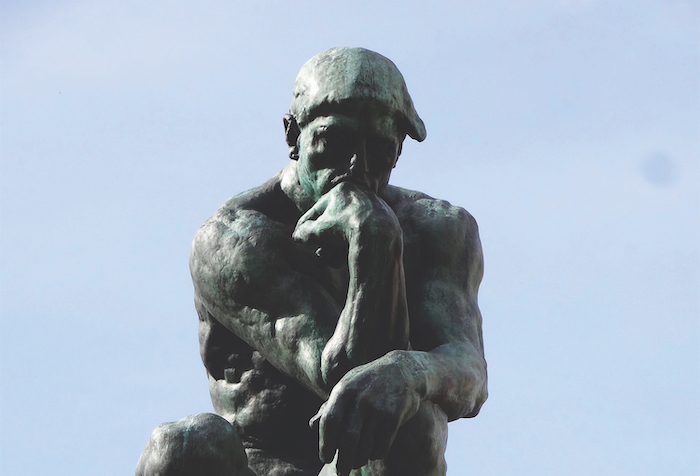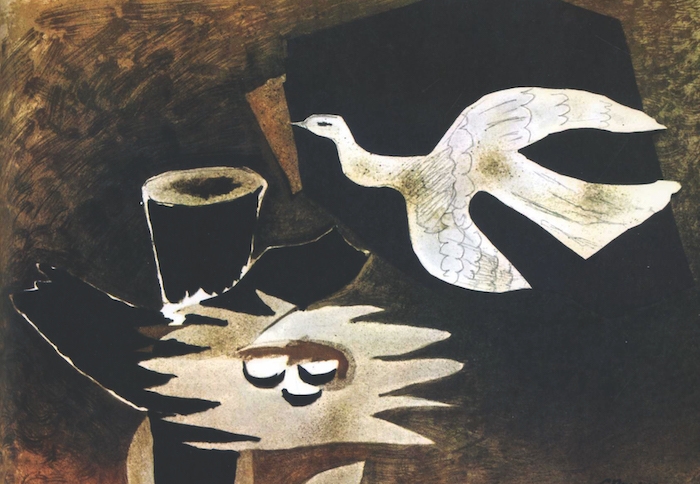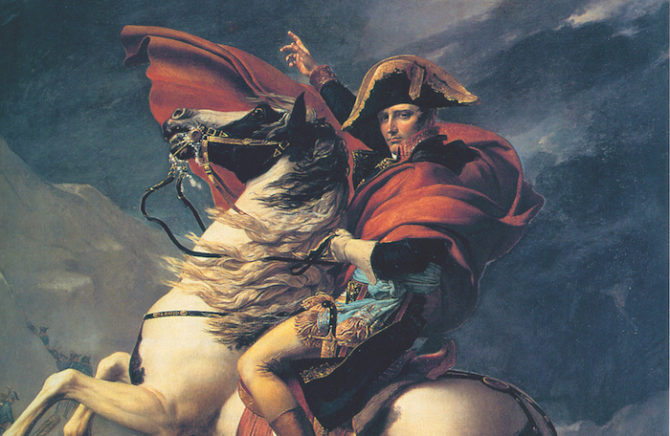Did You Know? Art Facts on Napoleon, Renoir, and More
My Kingdom for a Donkey
When the King of Spain commissioned an equestrian portrait of his ally Napoleon from painter Jacques-Louis David, Napoleon told the artist to paint him looking calm and riding a spirited horse, but said he wouldn’t have time to sit for the portrait. The resourceful artist drew from his own son astride a sawhorse, items from a uniform, and a previous portrait of Napoleon’s face. The result is a heroic windswept scene of the ruler on a rearing steed. Reality was a little less cinematic. Napoleon did not lead the troops; he crossed St Bernard Pass a few days after them, in fair weather, on the back of a mule. There were five versions of the painting.

Pierre Auguste Renoir, Le Moulin de la Galette. Photo credit ©Musée d’Orsay
Seeing Double
Renoir painted two versions of the celebrated Dance at le Moulin de la Galette scene in 1876. The larger version hangs at the Musée d’Orsay in Paris. The other joyful depiction of the open-air dance hall in Paris was auctioned by Sotheby’s in 1990 and went to a Japanese magnate for US$78.1 million. While one is painted in a slightly more fluid manner, the two are so similar – to the very last detail in the ribbons on the women’s dresses – that art experts can’t decide which one was painted first. There is one detail that tells them apart: if you notice that the central female figure leaning forward lacks an earring, then you are catching a rare glimpse of the privately-owned version sold at Sotheby’s.

Le Penseur, Auguste Rodin. Photo credit © Sylvia Davis
Size Matters
Though there are now multiple casts of Auguste Rodin’s famous sculpture The Thinker around the world, Rodin originally conceived it, in 1880, as a much smaller version, just 70cm high, at the cusp of The Gates of Hell. The ensemble sculpture was inspired by Dante’s Inferno, and the thinker was meant to represent the author of the Divine Comedy himself. The original was tiny in comparison to the enlarged 1.80-metre version we are familiar with today.

Georges Braque, Bird returning to its nest (1956). Photo credit ©Georges Braque, Centre Georges Pompidou
Alive in the Louvre
Major 20th-century French painter Georges Braque was the first living artist ever to show in the Louvre. Braque’s work, together with the work of his colleague Pablo Picasso, is credited with the development of Cubism. Two years before his death, in 1961, a retrospective of all his works, The Braque Workshop, was exhibited at the Louvre. They were the first works of art ever exhibited at the prestigious museum during the lifetime of the artist.
From France Today magazine
Share to: Facebook Twitter LinkedIn Email
More in Pablo Picasso, Renoir, rodin
Leave a reply
Your email address will not be published. Required fields are marked *





